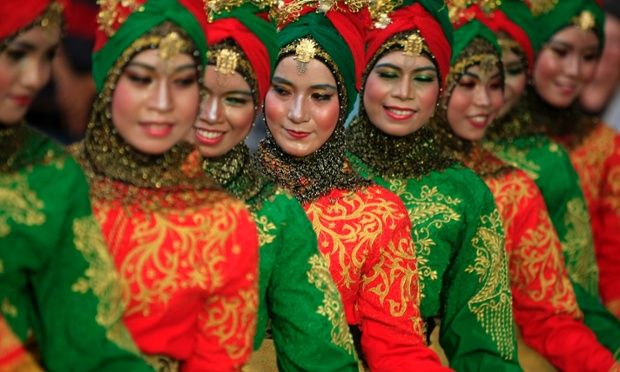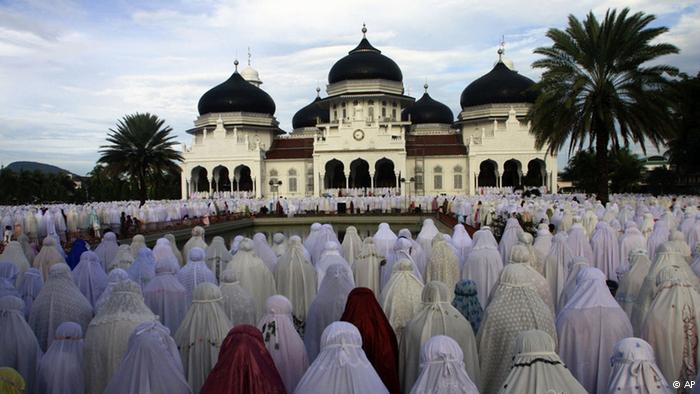
Islam and Achenese Dance – 6th Grade Edition
1000-words essay #4Islam and performing arts have a very complex relationship because of conflicting views and opinions on arts and music. Many people in the Islamic faith use performing arts as a way to connect with Allah. But others practicing Islam disapprove of it. Because of this, Islamic culture has two different categorizations for music and performing arts. These are musiqa and non-musiqa. Non-musiqa is a style of music that is approved of in Islamic culture. It is seen as good because it typically relates to Quranic and religious chants. These chants are similar to prayer except they are spoken aloud and have a rhythmic nature. Since this directly involves religion it is seen as favorable in Islam. But musiqa is not favored. Musiqa typically refers to any other kind of music or performance that does not relate to Islam. It is not rooted in religion and because of that, it is seen as bad by many orthodox Muslims. Orthodox refers to how strictly a person obeys traditional practices, doctrines (literature like the Bible or the Quran), and other established norms within the religion. With Islam, orthodox Muslims tend to dislike musiqa and others may play musiqa. Also, Muslims with different interpretations of the religion feel differently about music and performing arts as well. Muslims with a more legalistic interpretation tend to dislike music more than Sufi orders. A legalist interpretation is the strict following of religious code or written works. So for example, legalist Christians would fully believe the Bible as law and stick to everything the Bible said as how one should live their lives. But, Sufi orders see music as a way to reach a divine connection with God. Sufi orders focus more on the mysticism and spirituality of Islam. They are not as strict about following the rules and listening to the Quran or Sharia. Since they are not so strict, they do use music and performances to practice their faith.

Islam has particularly influenced Indonesia and the way that performing arts are practiced there. In the 16th century, Indonesia was influenced by the Indian religions of Hinduism and Buddhism. After these encounters with India, these new religions became mixed with indigenous traditions and religions in Indonesia. Hinduism and Buddhism are religions that highly encourage the “development of social, political, and religious life, and especially of literary and artistic”(Harnish) works. So, by the time Islam arrived in Indonesia, the local art culture was very strong. Islam began to expand into Indonesia also during the 16th century and soon became the dominant religion in Java. Java is an island in Indonesia and the majority of Indonesians live there. But the artistic culture complicated the expansion of Islam and changed the expression of performing arts in Indonesia.

After the arrival of Islam in Indonesia, many aspects of Indonesian culture and life became Islamicized. For example, in Islamic culture, they dislike the worshipping of false idols over their God, Allah. This is why there are no statues of people in Mosques because it can be then become an idol. So, once Islam came to Indonesia, the Javanese tradition of wayang puppets became Islamicized. At first, these puppets were made to represent humans, but after Islam, their features and anatomy became distorted. This distortion was on purpose. It was changed so that there was no idolatry of the puppets. If they appeared as humans, then they could become an idol. Certain indigenous Indonesian traditions were also adopted and became tied to Islam. The gamelan is an example of this. The gamelan is an ensemble of percussion instruments that originated from Indonesia. But in the 16th century, a wali (Javanese Islamic saint) used the gamelan to convert Indonesians to Islam. He created a tradition called gamelan sekaten where a gamelan is placed by a Mosque. The music would entice people from nearby to join the festivities. But in order to enter the Mosque yard, the guests had to convert to Islam. The gamelan sekaten is just another way that the traditions of both Islam and Indonesia came together and made a new tradition. Because of this exchange of beliefs between Indonesian culture and Islamic culture, there have been conflicts. There are often conflicts between older Javanese art forms and newer Islamic ones but they find common ground. Instead of one tradition winning, they mix their traditions into a new one, like the gamelan sekaten.
Islam is practiced in different regions of Indonesia in different ways. In Java, Islam is not very strict. Islam in Java is a big part of the culture but it is not exaggerated and Sharia law is not in use there. Sharia law is Islamic religious law. But in other regions, they do use Sharia law. One of these places is Aceh. Islam in Aceh is very strong and it is a prominent part of their society. The majority of Acehnese people are Muslim and everyone who lives there, even people who are not Muslim, must live by Sharia law. An example of a Sharia rule is no gambling. So, if you are a person that has been caught gambling, they will publicly cane you or put you in jail. Public caning is when they put somebody on a stage and hit them with a cane multiple times depending on what they are guilty of. This sounds extreme to most people from Western societies but that is a very normal thing in a strongly Islamicized society. Aceh also has a prominent integration of Islam into the everyday lives of its people. For example, Mosques are seen as places where you could hang out, meet up with people, or eat a meal. It is not just for one day a week but it is a place for fun and relaxation on a daily basis.

Footnote: This was written for an audience of 6th graders. I did this by using shorter sentences, simple language, repetition of nouns, and I made sure to explain concepts and terms clearly.
Written by Lexie Allen
Categories
Calendar
| M | T | W | T | F | S | S |
|---|---|---|---|---|---|---|
| 1 | 2 | 3 | 4 | |||
| 5 | 6 | 7 | 8 | 9 | 10 | 11 |
| 12 | 13 | 14 | 15 | 16 | 17 | 18 |
| 19 | 20 | 21 | 22 | 23 | 24 | 25 |
| 26 | 27 | 28 | 29 | 30 | 31 | |